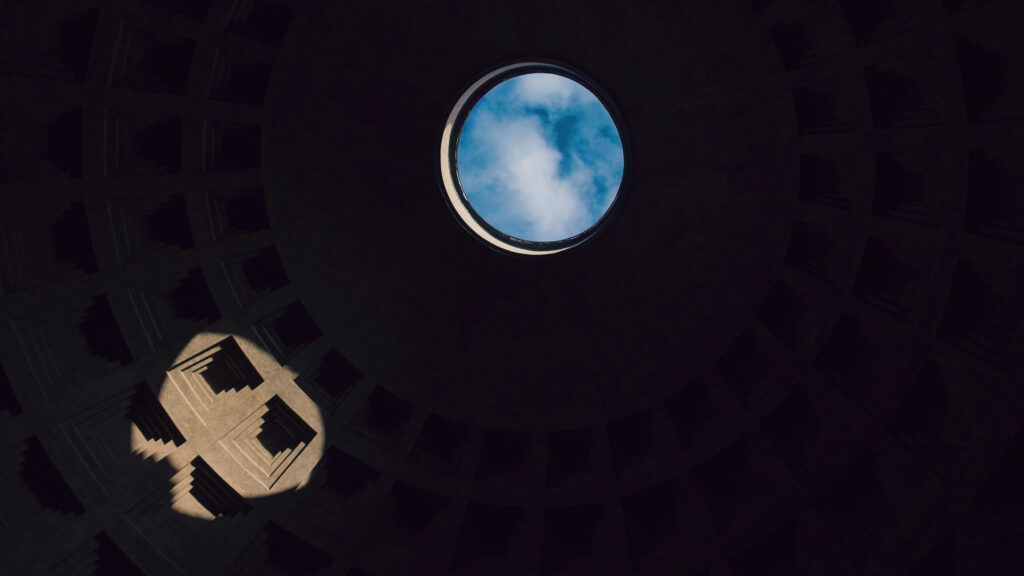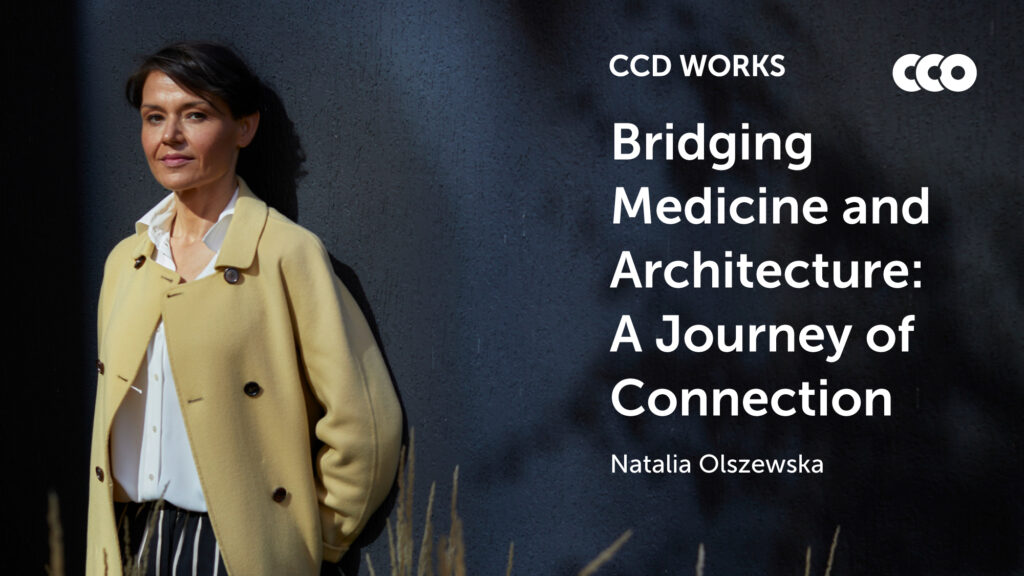Introduction
Creating attractive and publicly accessible urban spaces is today a widely accepted and key objective of spatial policies adopted in many cities around the world. More and more attention is being paid not only to desired functional and spatial characteristics, quality, mix-use, and inclusiveness of such places, but also to their socio-cultural, intangible, “soft” values, such as identity, climate, spirit, or atmosphere.
Enhancing psychological and social issues in the creation of good urban spaces is also becoming part of investment strategies, generating a competitive advantage or urban marketing. At the same time, there is a noticeable tension between the use of certain terms and their deeper understanding, and, as a result, the possibilities for their study, design, and management. This applies primarily to terms referring to elusive, hard-to-grasp aspects of places, often of an (inter)subjective nature at best. A particularly interesting case is the concept of atmosphere, which occupies an important place in scientific and philosophical reflection, is a constant goal of design practices, and at the same time is something ephemeral that evades definition and objectification.
In this article I will explore the architectural struggles associated with this challenge. In doing so, I will draw upon the findings of my research on the role of social knowledge of urban life in architectural practices, which I carried out under a doctoral fellowship commissioned by the City of Warsaw in 2022-2023. The aim of the research was to identify the challenges and limitations in studying and understanding the socio-cultural dimensions of the city and its translation into guidelines for design and competition practices. The outcome of the research project was the elaboration of recommendations for a cultural and social analysis procedure as part of the competition preparation for public spaces and local centers in Warsaw, Poland. The research report (in Polish) is available here.
Socio-cultural values of urban spaces
Before delving into the concept of atmosphere, it is worth starting with the question of what the socio-cultural values of urban spaces are (as this is a kind of umbrella category for the concept of atmosphere). As it turns out, there is a limited consensus in public and academic debate on how to define and study them, and what constitutes the socio-cultural context of an architectural investment. Consequently, this affects what should be a priority in the design and decision-making process12, affecting the essence of good design or high “design value”3. The multidimensionality and fuzziness of socio-cultural aspects mean that some investments may occasionally not fit into the context of the place, fail to meet standards or the hopes or social expectations placed upon them.
The question of socio-cultural values is currently being raised in studies of sustainable urbanization, architecture and design, as well as urban environmental or ecosystem services. In these approaches, the emphasis is on valuing socio-cultural aspects as one of the pillars of sustainable development. It is worth mentioning in this context, for example, the Royal Institute of British Architects’ (RIBA) approach, according to which the “design value” of architectural investments should be assessed as the sum of environmental, economic and social value, rather than only in formal, technical and aesthetic terms. While there is increasing consensus within the design and construction industry regarding the identification and measurement of the first two of these values (e.g., in terms of carbon footprint or energy and cost efficiency over investment life cycle), RIBA notes that the understanding and tools for analyzing social and cultural aspects still require research and definition.4
Attempting to reach socio-cultural values such as the needs and concerns of the local community, identity, or the atmosphere of a place should not, however, mean separating the non-material aspects from the physical fabric of the city (buildings, squares, street layouts, as well as green areas and elements of the natural environment), nor treating it as a scenery or a source of aesthetic experiences and emotions.56 In existing literature emphasis is rather placed on the spatial context and embodied nature of human practices, experiences, and identities.7 This means, among other things, that the places where they occur or are constructed serve more as an active mediator with which one enters into relations, rather than a mere cause or neutral backdrop.
Atmosphere, or what?
In urban studies and social research on architecture, the concepts of identity or genius loci of a place have long been subjected to analysis. These concepts refer to the qualitative properties of space or buildings, or the cultural and symbolic layers assembled in a given location, its historical depth, and overlapping images that serve as sources of aesthetic and spiritual experience.8 Similarly in architecture, when considering the form or qualities of buildings, questions of symbolism, identity, aura and other qualities related to their ambience are often raised, and taking these aspects into account when creating successful places in design practice is no less important than technical parameters.9
More problematic and elusive is the concept of atmosphere. Yet, according to some researchers, we currently live in an era of “atmoculture”, where there is a prevailing tendency among cities, private investors, architects, local communities, and other stakeholders to seek various sets of norms and recipes for determining, designing, and managing the atmosphere of places.10
For years, the atmospheric dimension of architecture has been explored, among others, by Swiss architect Peter Zumthor, who is interested in the possibilities of working with atmosphere as an aesthetic category and evoking feelings or moods in a place through specific design efforts.11 A broader scientific reflection on architecture and urban space has been influenced by the concept of atmosphere through the work of Gernot Böhme. According to the German philosopher, the atmosphere of places does not depend solely on their physical characteristics or the accompanying symbolism and aesthetics. Rather, experiencing it involves the individuals themselves, who, through their presence, reactions, norms, values, and beliefs, influence the sensory characteristics of their surroundings. This subjective aspect of experiencing atmosphere does not mean, however, that it has an entirely individual dimension, dependent on the perception and dispositions of the individual. On the contrary, according to Böhme, the key is the interrelationship between the subjective and the objective, between the subject (experiencers) and the object (building, space), their co-presence in a given situation, the co-creation of atmosphere.12 Atmosphere in this sense occurs, so to speak, in-between, in a constellation of people, places, and things.13 It is not fully determined by spatial or material form, nor by individual experiences unfolding against its backdrop.14 It is something tied to a specific place, yet not being part of it, and at the same time it is “something that surrounds us, in which we are immersed, what we breathe, and the quality of which affects the possibilities of our actions.”15
The atmosphere or character of a place is thus influenced not only by social practices and norms, individual bodily and sensory dispositions, or elements of material culture (buildings, spatial arrangements, their symbolism, physical characteristics). In this constellation, various non-human actors (plants, animals, landscape and weather conditions) also play a significant role, bringing their attributes (emotions, shapes, movements, gestures, colors, smells, sounds) co-creating “what is social”.16 We share with them the atmosphere of a place. This also introduces a temporal dimension to the understanding of atmospheres. They are “transitory qualities”17, products of the moment, but also of the historical and social context. This means that the atmospheres of places transform, are vulnerable to changes in the environment, times of day and year, periods of plant vegetation and animal activity, fluctuating human moods and social needs. In a certain way, atmospheres produce a “resonance between those who live together”18 and can build a sense of identification with a place, understood in an “atmospheric” way – as a typical (bio)diverse constellation of people, places and things.
How to design an atmosphere?
How can such an understanding of atmosphere be translated into a design language and the daily struggles of architects in developing projects, spatial solutions, material choices, or planned light and shadow? My research indicates that the atmospheric dimension of architecture and places holds an important position in the design process, yet architects find it extremely difficult to articulate, share and express it precisely in language.
The research project to which I refer here drew on, among others, (1) expert interviews with architects, landscape designers, urban planners, urban researchers and city hall planners, and (2) participant observations in a design studio working on an architectural competitions. Throughout the study, the question of atmosphere came up repeatedly in the context of how architectural competitions should be prepared and organized, and how terms such as “public space atmosphere” shape design work. The atmosphere or character of a place also constituted a constant of the reflections, discussions and design attempts observed during the architects’ work.
For architects, the desired (in a competition, by an investor or a local community) atmosphere of a space is extremely hard to define, because it can be described by relatively objective aspects and parameters, and by highly individual predispositions and feelings or conditions of the moment. It may be something that is felt subconsciously, something that happens between a place and those who perceive it (I walk in and feel how it is; When I think about the atmosphere, I think primarily about the relationship between me and my senses within that space). Therefore, from a design standpoint, it may be beneficial to move away from metaphysics to meteorology and treat the atmosphere as a material, organoleptic concept that can be dissected. Then, the need to create, for example, a place with an intimate atmosphere, would rather be expressed in relation to aspects such as lighting, textures and colors of materials, urban views, safety, thermal comfort, or acoustic conditions. The aim would be to provide a description that guides designers more towards the direction they could take, that is, what kind of intimacy might be desired. The search for design solutions that would meet the expectations of the investors or community regarding the character and atmosphere of a place is thus filtered by the designers’ feelings. It is a function of his or her knowledge and sensitivity, past experience, and the anticipated psychological effects of the recipients. Architects strive to translate the ephemeral nature of concepts or feelings into more tangible images and meanings, transforming what is socio-cultural or psychological into the language of specificity, into something more concrete, possible to design (matter, texture, color, light, etc.).
On the other hand, my ethnographic research in an architectural office allowed me to observe that the issues architects pay special attention to in the initial phase of research & design or research by design typically concern historical conditions, related to styles in architecture or functional and material solutions, references and inspirations. Atmosphere then becomes an element of the broader cultural and design context that extends beyond the materiality and history of the place, shifts and transcends local conditions. It can be an atmosphere drawn from an Italian piazza rather than a nearby square and local character, or a loose play of associations stemming from similar projects or previous designs. Architectural projects and the envisaged atmosphere of the place are not so much placed within a specific context, the recognition of which is an important part of design practice. Rather, it is contextualized by the design teams. In the spirit of actor-network theory, it can be said that kind of contextualization work in this regard is performed not only by designers, but also by similar projects, pictures, maps, drawings, modeling and visualization software, VR goggles, books on neuroscience in design, or external consultants.19,20
Within these practices, matters pertaining to social values, everyday culture, official and unofficial patterns of use, and atmosphere understood as a local aesthetic category and a value evoking certain feelings and moods in a given place, tend to remain in the background, or at least such conclusions can be drawn from observation of the architects’ work and discussions. These topics are rather implicit, assumed by design teams and inscribed as a kind of “scripts”21 in the proposed functional program, in materials, or handed over to those responsible for preparing renderings or a narrative description of the project.
Just as atmosphere unfolds or occurs in the actual experience and constellation of people, places and things, so its creation, in a way, occurs in casual design practices, in speculations, inspirations, and references, in the selection of functional and spatial solutions, or in the creation of narratives, either through text, visualizations or PR efforts. At the same time, for some architects, the intangible aspects of a city do not result from visible manifestations in space, but from stories about everyday life and the identity of places, and can be highly “fertile in design”. Working with atmosphere, referring to the bidirectional person-space relations can paradoxically negate its traditionally understood context, and by “hacking” it can redefine it or emphasize the character of urban space and community.
Summary
The above considerations draw on the conclusions from the study on public spaces and building design practices, and the preparation of such investments through architectural competitions. The public nature of places requires certain qualities, but most importantly they should be inclusive for everyone. One might ask whether such spaces can have any distinctive atmosphere at all, if everyone can experience it differently, if it is an accumulation, a constellation of many diverse actors “bringing” their norms, things, gestures, use practices and cultural background to it, and if it is felt through the individual body rather than just external observation?
On the other hand, there is no doubt that atmospheres exist, and places, including public spaces, have a certain ambience or atmosphere. After all, to paraphrase Teresa Brennan’s statement from The Transmission of Affect, is there anyone who, at least once, has not felt the atmosphere of an urban square?22 Both in official language and in everyday conversations, we can hear about the urban atmosphere and the atmosphere of home, about attractive, nostalgic, and frightening atmospheres, about the atmosphere of power or the sacrum. On the other hand, these and other characteristics or impressions of places are often evoked spontaneously, intuitively, or using various metaphors. We extract them, so to speak, “out of the air”, from the aura that surrounds us in a given place, without belonging to any of us.
Do architects likewise depend on extracting desirable qualities of places out of the air and assuming that the design or material solutions they propose will evoke in recipients exactly those emotions and feelings they intend? Some support in this regard may come from neuroscientific approaches, which in recent years have also sought to explore the question of atmosphere of architecture and urban spaces. The results of experiments conducted in this field confirm theoretical considerations regarding the interrelationship between the attitudes, abilities, or empathic sensitivity of people and their spatial environment. Although the neuroscientific field of research on urban spaces seems intriguing and opens a door to the potential for objectification of the atmosphere, it is hard to imagine multidimensional, technologically sophisticated and expensive analyses conducted on every architectural project.
So perhaps when planning and designing cities it is worth drawing on sources of reflection and studies of atmosphere, that is, the marketing and the organization of commercial and retail spaces? In such projects, knowledge from environmental psychology, the role of light, materials, various textures, and the sensory experience of recipients has been and continues to be most commonly utilized23. The essential purpose of this interest in atmosphere, however, is not necessarily to create “good places” with high “design value”, but to attract a certain target group (and pull others away) or simply to maximize profits. And perhaps this would be the greatest challenge for architects who want to consciously shape the atmosphere of places – to build on research and scientific knowledge, but in a reflective and critical manner. So that the goal would not be just to optimize experiences for the needs of the market and urban marketing, but to create atmosphere as a fundamental aspect of everyday experience, perception and practice of the city and as a unique element of local life.24
References
1 Yaneva, A. (2009). The making of a building: A pragmatist approach to architecture. Peter Lang.
2 Gregorowicz-Kipszak, J. (2015). Rethinking social impact assessment through urban design: Towards designerly evaluation with a socio-form approach. Chalmers Tekniska Hogskola (Sweden).
3 Serin, B., Kenny, T., White, J., & Samual, F. (2018). Design Value at the neighbourhood scale: what does it mean and how do we measure it? UK Collaborative Centre for Housing Evidence.
4 RIBA (2020). Social Value Toolkit for Architecture, 2020, Royal Institute of British Architects.
5 Bullock, C., Joyce, D., & Collier, M. (2018). An exploration of the relationships between cultural ecosystem services, socio-cultural values and well-being. Ecosystem services, 31, 142-152.
6 Scholte, S. S., Van Teeffelen, A. J., & Verburg, P. H. (2015). Integrating socio-cultural perspectives into ecosystem service valuation: A review of concepts and methods. Ecological economics, 114, 67-78.
7 Satama, S., & Räikkönen, J. (2020). Exploring the embodied narrations of the city. International Journal of Culture, Tourism and Hospitality Research, 14(3), 373-383.
8 Gutowski B. (red.). (2009). A genius loci phenomenon. Place identity in historical and contemporary contexts. Muzeum Pałac w Wilanowie.
9 Birch, R., & Sinclair, B. R. (2013, July). Spirituality in place: Building connections between architecture, design, and spiritual experience. In ARCC Conference Repository.
10 Pavoni, A., & Mubi Brighenti, A. (2017). Airspacing the City. Where Technophysics Meets Atmoculture. Intersections: At the Technophysics of Space, 91-103.
11 Zumthor, P. (2006). Atmospheres: Architectural environments. Birkhäuser.
12 Böhme, G., & Thibaud, J. P. (2016). The aesthetics of atmospheres. Routledge.
13 Bille, M., Bjerregaard, P., & Sørensen, T. F. (2015). Staging atmospheres: Materiality, culture, and the texture of the in-between. Emotion, space and society, 15, 31-38.
14 van Vliet, H. (2018). The Atmosphere in Open Public Spaces. In Suurenbroek F., Nio I., de Waal M. (red.), Responsive public spaces: Exploring the use of interactive technology in the design of public spaces. Amsterdam University of Applied Sciences.
15. Krajewski, M. (2022). Affective Atmosphere: The Concept’s Cognitive Utility. Teksty Drugie, (3), 285-301.
16 Latour, B. (1996). On interobjectivity. Mind, culture, and activity, 3(4), 228-245.
17 Wesener, A. (2019). The atmosphere of a street: Experimental fieldwork on urban ambiances. “SHS Web of Conferences”, 64, 01016.
18 Sloterdijk, P., & Heinrichs, H. J. (2011). Neither sun nor death. Semiotext(e).
19 Latour, B. (1996). Aramis, or the Love of Technology. Harvard University Press.
20 Janas, K. (2022). Ordering Things and People: On the Advantages of an Ethnography of the Design Process. Stan Rzeczy, (23), 67-94.
21 Akrich M. (1992). The De-Scription of Technical Objects, In Bijker W. E., Law J. (red.), Shaping Technology/Building Society. MIT Press, p. 205–224.
22 Brennan, T. (2004). The transmission of affect. Cornell University Press.
23 Kotler, P. (1973). Atmospherics as a marketing tool. Journal of retailing, 49(4), 48-64.
24 Łukasiuk, M. (2015). Localness in the Context of Architecture and Atmosphere. Societas/Communitas, 20 (1-2), p. 225–236.










